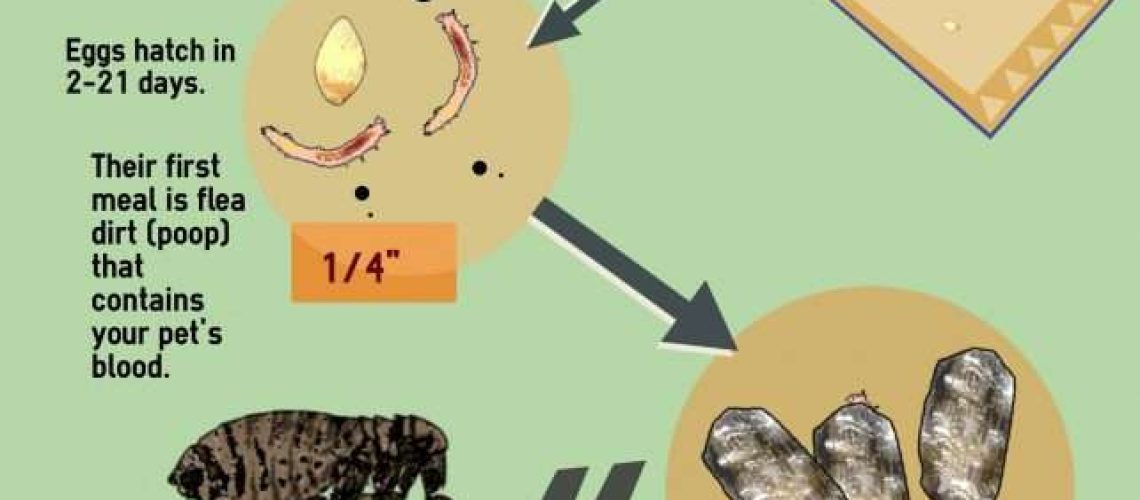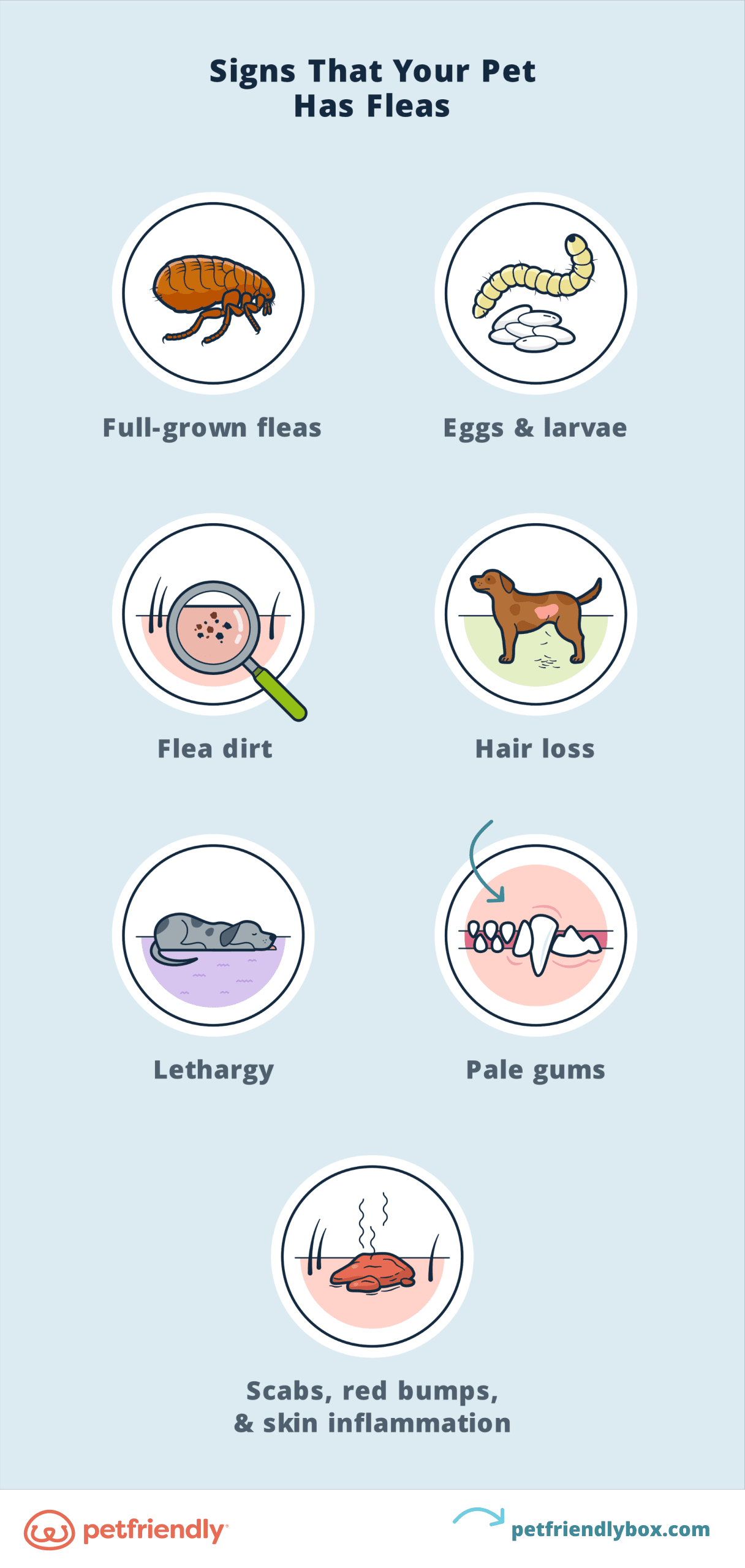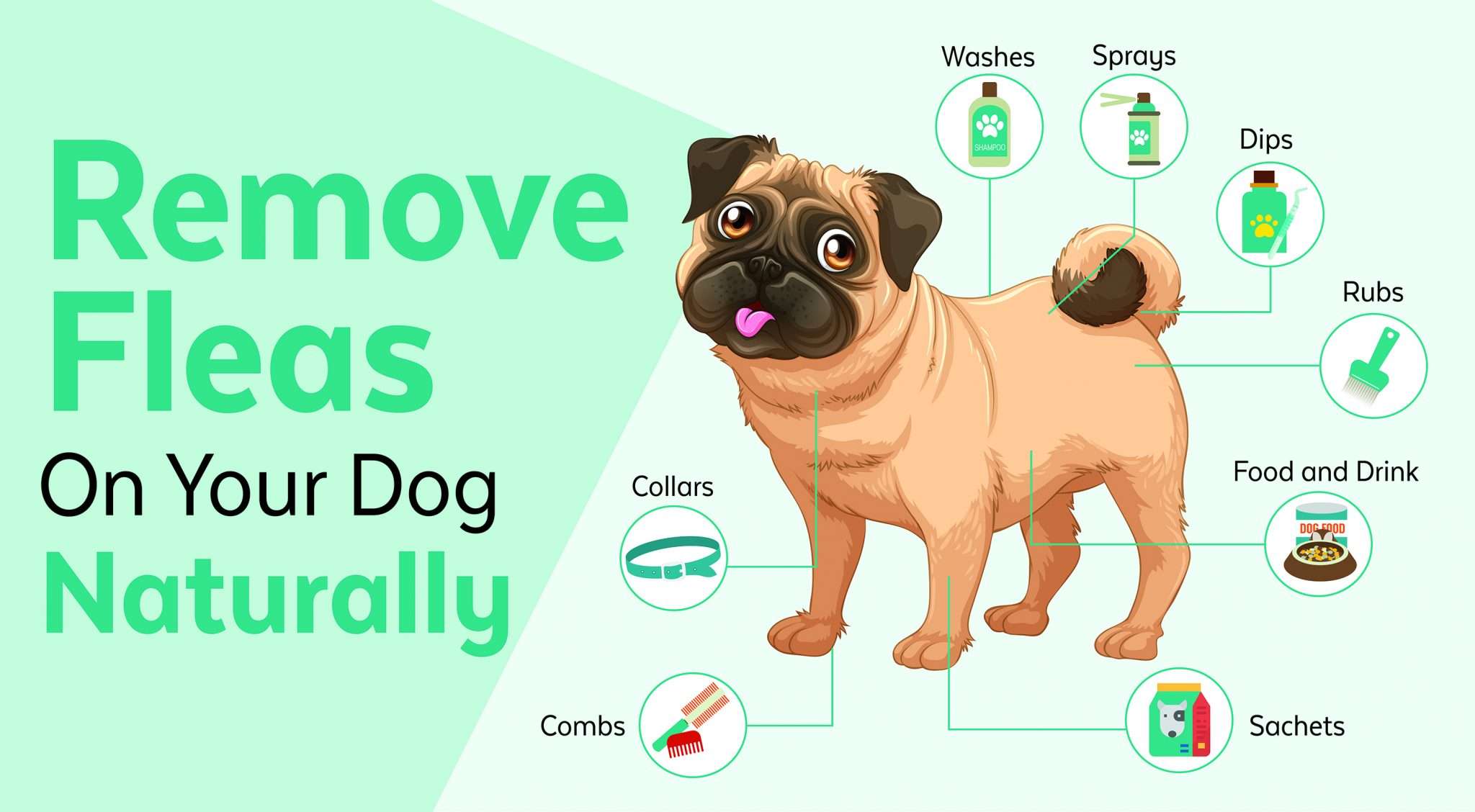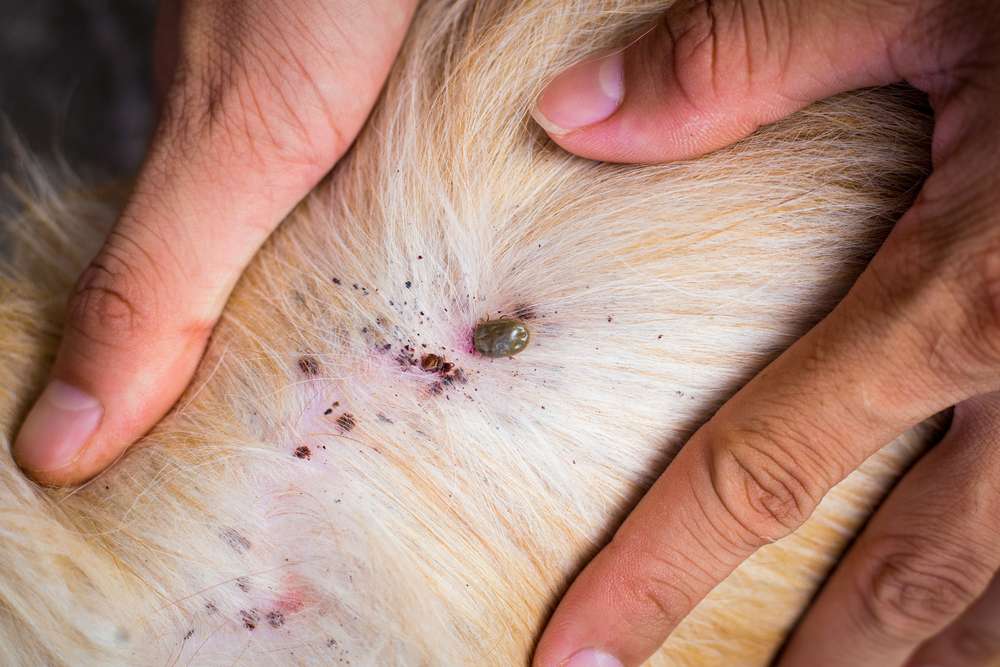Key Takeaways:
- Regularly groom your dog to remove flea dirt and prevent infestation.
- Use a flea comb to carefully remove flea dirt from your dog's fur.
- Wash your dog's bedding and vacuum your home frequently to eliminate fleas and their eggs.
- Consult with a veterinarian for effective flea control products suitable for your dog.
- Maintain a clean and hygienic environment to minimize the risk of fleas reinfesting your dog.
Are you tired of seeing your furry friend scratching and itching all day long? Well, we have some good news for you! In this article, we will uncover the secrets to getting rid of flea dirt on dogs, bringing relief not only to your precious pet but also to your entire household. Imagine the joy of seeing your dog wagging its tail in happiness, free from those pesky fleas. Understanding how to tackle this issue is essential for every dog owner, as fleas can not only cause discomfort but also transmit diseases. So, let's dive into the world of flea dirt and discover effective ways to eliminate them from your beloved canine companion's life. By the end of this article, you'll be armed with the knowledge and tools necessary to conquer these tiny pests once and for all. Get ready to say goodbye to flea dirt and hello to a happier, healthier pup!
What is flea dirt and why is it a problem for dogs?
Flea dirt refers to the small black specks or particles that are left behind by fleas on a dog's fur. These specks are actually flea feces, which consist of digested blood from the host animal (in this case, your dog). Flea dirt is a clear indication that your dog has fleas.
Flea infestations can cause various problems for dogs. Firstly, fleas can cause intense itching and discomfort for your furry friend. Dogs may constantly scratch or bite at their skin, leading to skin irritation, redness, and even open sores. In severe cases, excessive scratching can result in hair loss.
Furthermore, fleas are not just a nuisance; they can also transmit diseases to dogs. Some common diseases transmitted by fleas include tapeworm infections and Bartonella (also known as cat-scratch fever). It is essential to address flea infestations promptly to protect your dog's health and well-being.
Signs of flea dirt on your dog's fur
To identify flea dirt on your dog's fur, you can perform a simple test. Take a fine-toothed comb or flea comb and run it through your dog's fur, especially around the neck, back, and tail areas. After combing through the fur, check the comb for any black specks or particles.
If you find small black specks on the comb that resemble pepper flakes or tiny grains of sand when you rub them between your fingers, it is likely flea dirt. Another way to confirm if it is flea dirt is by placing the specks on a white paper towel and adding a few drops of water. If the specks turn reddish-brown due to the presence of digested blood, it is definitely flea dirt.
Natural remedies to remove flea dirt from dogs
There are several natural remedies that can help remove flea dirt from your dog's fur. One effective method is using a mixture of equal parts apple cider vinegar and warm water. Dip a clean cloth or cotton ball in the solution and gently wipe away the flea dirt from your dog's coat. The acidic nature of apple cider vinegar helps dissolve the debris.
Another natural remedy involves creating a paste using baking soda and water. Apply this paste to the areas with flea dirt and gently massage it into your dog's fur. After a few minutes, rinse off the paste with warm water. Baking soda helps loosen the particles, making it easier to remove them.
- Mix equal parts apple cider vinegar and warm water
- Dip a clean cloth or cotton ball in the solution
- Gently wipe away flea dirt from your dog's coat
- Create a paste using baking soda and water
- Apply the paste to areas with flea dirt
- Gently massage it into your dog's fur
- Rinse off the paste with warm water after a few minutes
Identifying flea dirt on your dog's fur
Flea dirt is the feces of fleas, which are tiny parasitic insects that infest dogs and other animals. It looks like small black specks or grains of sand on your dog's fur. You can identify flea dirt by using a fine-toothed comb to brush through your dog's coat. If you see black specks that resemble pepper or coffee grounds, it is likely flea dirt. Another way to confirm if it is flea dirt is by placing the specks on a damp white paper towel. If they turn reddish-brown when wet, it indicates the presence of blood in the flea dirt.
How to differentiate flea dirt from regular dirt?
While it may be challenging to distinguish between regular dirt and flea dirt, there are a few key differences to look out for. Flea dirt tends to be more concentrated around areas where fleas commonly hide, such as the neck, back, and tail base. Regular dirt is usually more spread out and not limited to specific areas. Additionally, if you wet regular dirt, it will not turn reddish-brown like flea dirt does.
Tips for preventing fleas in the first place:
1. Keep your dog's living area clean: Regularly vacuum carpets and wash bedding with hot water.
2. Maintain good hygiene: Bathe your dog regularly using a gentle shampoo specifically designed for dogs.
3. Use preventive treatments: Consult with your veterinarian about suitable flea prevention products for your dog.
4. Keep outdoor spaces tidy: Trim grass regularly and remove any debris or piles of leaves where fleas might thrive.
Remember, identifying flea dirt early can help prevent further infestation and discomfort for your furry friend.
Natural remedies to remove flea dirt from dogs
If you notice flea dirt on your dog's fur, there are several natural remedies you can try to remove it. One effective method is using a mixture of warm water and mild dish soap. Start by wetting your dog's fur and then lather the soapy water onto the affected areas. Gently massage the fur for a few minutes to loosen the flea dirt. Rinse thoroughly with warm water and comb through your dog's coat with a fine-toothed comb to remove any remaining debris.
Benefits of using natural remedies:
Using natural remedies to remove flea dirt has several advantages. Firstly, they are generally safe for your dog as they do not contain harsh chemicals that may irritate their skin. Secondly, these remedies can be easily made at home using common household items, making them cost-effective alternatives to commercial products.
Other natural remedies worth considering:
1. Apple cider vinegar: Dilute apple cider vinegar with water and use it as a final rinse after bathing your dog.
2. Lemon spray: Mix freshly squeezed lemon juice with water and spray it on your dog's coat, avoiding their eyes and any open wounds.
3. Essential oils: Certain essential oils like lavender or neem oil can help repel fleas when diluted in carrier oils such as coconut oil or almond oil.
Remember to consult with your veterinarian before trying any new natural remedies, especially if your dog has sensitive skin or any underlying health conditions.
(Note: The diagrams mentioned in the prompt cannot be provided as this is a text-based platform.)
Can regular bathing help remove flea dirt from a dog's coat?
The benefits of regular bathing for dogs
Regular bathing is an essential part of maintaining your dog's overall health and hygiene. Not only does it keep their coat clean and shiny, but it also helps to remove dirt, debris, and unpleasant odors. When it comes to flea dirt, bathing can be an effective way to eliminate these tiny black specks that are left behind by fleas.
Choosing the right shampoo for flea dirt removal
When selecting a shampoo to remove flea dirt from your dog's coat, it is important to choose one specifically formulated for this purpose. Look for shampoos that contain ingredients like pyrethrin or permethrin, as these are known to effectively kill fleas and their eggs. Additionally, opt for shampoos that have moisturizing properties to prevent drying out your dog's skin.
Tips for bathing your dog
To effectively remove flea dirt during bath time, follow these steps:
1. Wet your dog thoroughly with warm water.
2. Apply the flea shampoo evenly throughout their coat, paying extra attention to areas where flea dirt is most visible.
3. Massage the shampoo into a lather and let it sit on your dog's fur for the recommended amount of time specified on the product label.
4. Rinse your dog thoroughly with warm water until all traces of shampoo are removed.
5. Dry them off with a towel or use a blow dryer on a low heat setting if they tolerate it.
Remember, regular bathing alone may not completely eliminate fleas or prevent reinfestation. It is crucial to combine bathing with other preventive measures such as using flea treatments prescribed by your veterinarian.
Effective shampoos and products to eliminate flea dirt from a dog's fur
Choosing the right flea shampoo
When it comes to eliminating flea dirt from your dog's fur, using an effective flea shampoo is crucial. Look for shampoos that contain ingredients like pyrethrin, which is a natural insecticide derived from chrysanthemum flowers. Pyrethrin is known for its ability to kill fleas and their eggs on contact.
Other products for flea dirt removal
In addition to flea shampoos, there are other products available that can help eliminate flea dirt from your dog's fur. These include:
- Flea combs: These specialized combs have tightly spaced teeth that can effectively remove fleas, flea dirt, and eggs from your dog's coat.
- Flea sprays: These sprays contain insecticides that can kill fleas and their eggs. They can be sprayed directly onto your dog's fur or used to treat their bedding and surroundings.
- Flea powders: These powders can be sprinkled onto your dog's coat and then brushed through to help eliminate fleas and flea dirt.
Remember to always follow the instructions provided with these products and consult with your veterinarian if you have any concerns or questions about their usage.
Cleaning frequency to prevent the reoccurrence of flea dirt in your dog's bedding and surroundings
The importance of regular cleaning
To prevent the reoccurrence of flea dirt in your dog's bedding and surroundings, it is essential to establish a regular cleaning routine. This will help eliminate any remaining fleas, eggs, or larvae that may be present.
Tips for cleaning your dog's bedding
To effectively clean your dog's bedding and minimize the chances of reinfestation, follow these steps:
1. Remove all bedding materials from your dog's sleeping area.
2. Wash the bedding in hot water using a detergent that is safe for pets. This will help kill any remaining fleas, eggs, or larvae.
3. Dry the bedding on high heat to ensure that any surviving fleas or eggs are eliminated.
4. Vacuum the surrounding area thoroughly, paying close attention to cracks and crevices where fleas may hide.
5. Dispose of the vacuum bag or empty the canister outside to prevent reinfestation.
General cleaning tips
To further prevent flea dirt reoccurrence, consider these additional cleaning measures:
- Vacuum your home regularly, especially in areas where your dog spends most of their time.
- Wash your dog's toys and other items they frequently come into contact with.
- Treat your home and yard with flea control products recommended by your veterinarian.
By maintaining a consistent cleaning routine, you can significantly reduce the chances of flea dirt reappearing in your dog's bedding and surroundings.
When should you consult a veterinarian for flea dirt on dogs?
If you notice flea dirt on your dog's coat, it is important to take action promptly. While regular bathing and using flea shampoos can help eliminate flea dirt to some extent, there are situations where consulting a veterinarian becomes necessary.
Situations requiring veterinary consultation
You should consult a veterinarian if:
- Your dog shows signs of excessive itching, scratching, or discomfort.
- The presence of flea dirt persists despite regular bathing and preventive measures.
- Your dog develops skin irritations or infections as a result of flea infestation.
- You suspect that your dog has ingested fleas while grooming themselves.
The importance of professional guidance
A veterinarian will be able to assess the severity of the flea infestation and recommend appropriate treatment options tailored to your dog's specific needs. They may prescribe oral medications, topical treatments, or recommend additional preventive measures to ensure long-term flea control.
Remember, early intervention and professional guidance are key to effectively managing flea dirt and preventing further complications for your beloved furry friend.
In conclusion, getting rid of flea dirt on dogs is important for their health and comfort. By regularly grooming and treating our furry friends with flea control products, we can ensure they are free from these pesky pests and keep them happy and itch-free.
Will flea dirt go away?
If you discover fleas, ticks, or their waste on your pet, it is crucial to take action because they will not go away on their own.
What removes flea dirt?
To eliminate fleas, you will only require shampoo, water, and a brush to remove any clumps of fur that may have flea dirt. However, to effectively get rid of the fleas, it is necessary to use veterinarian-recommended insecticidal products along with treatments for your home.
Why does my dog have flea dirt but no fleas?
In some cases, you may find flea dirt even if there are no fleas present. This can happen because the fleas were once there but have either jumped off or have been eliminated through licking and grooming. To address flea dirt, it is recommended to start by giving your pet a bath.
Is flea dirt harmful to dogs?
Fleas can carry diseases such as bartonellosis, tapeworms, anemia, and other illnesses. These diseases can be transmitted to cats, dogs, and humans through ingestion or if an infected flea bites. Therefore, it is important to take immediate action if you find flea dirt in your home.
Does flea dirt mean an infestation?
If you discover flea dirt on your pet without finding any actual fleas, it suggests that you have identified the infestation in its early stages. It is still important to treat your pet right away for fleas, as the presence of flea dirt indicates that the parasites are feeding on your pet's blood.
What happens to flea dirt when it gets wet?
To test for flea dirt, you can remove some of the dark specks from the skin and place them on a wet paper towel. If it is true flea dirt, it will turn into reddish or brown spots when it absorbs moisture from the wet towel.

















